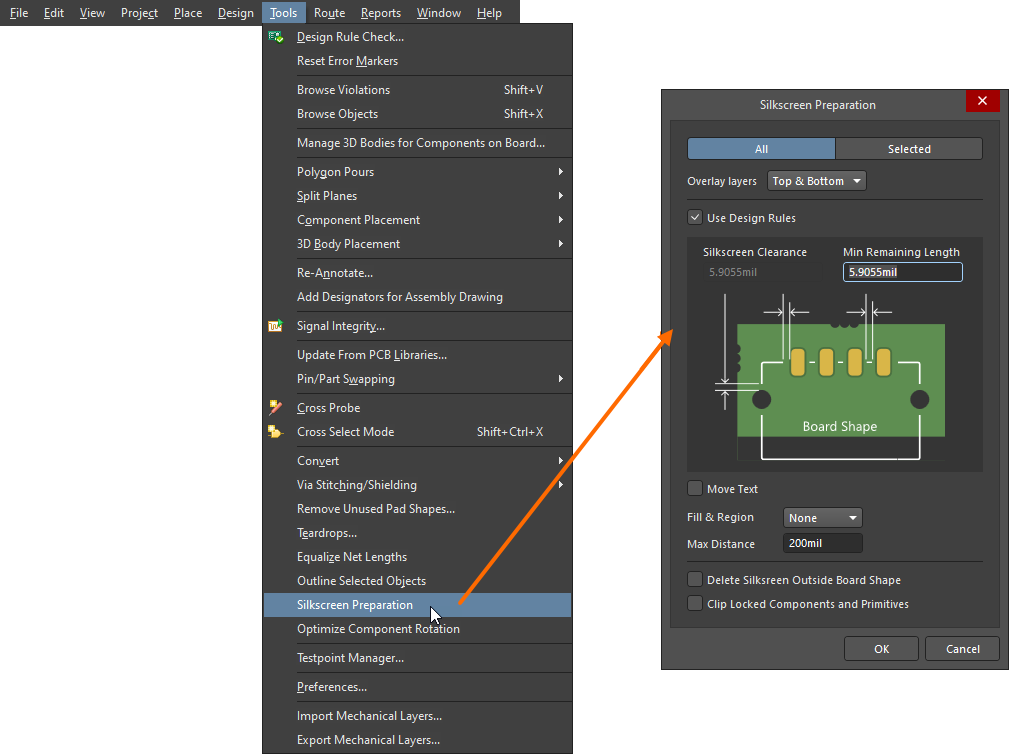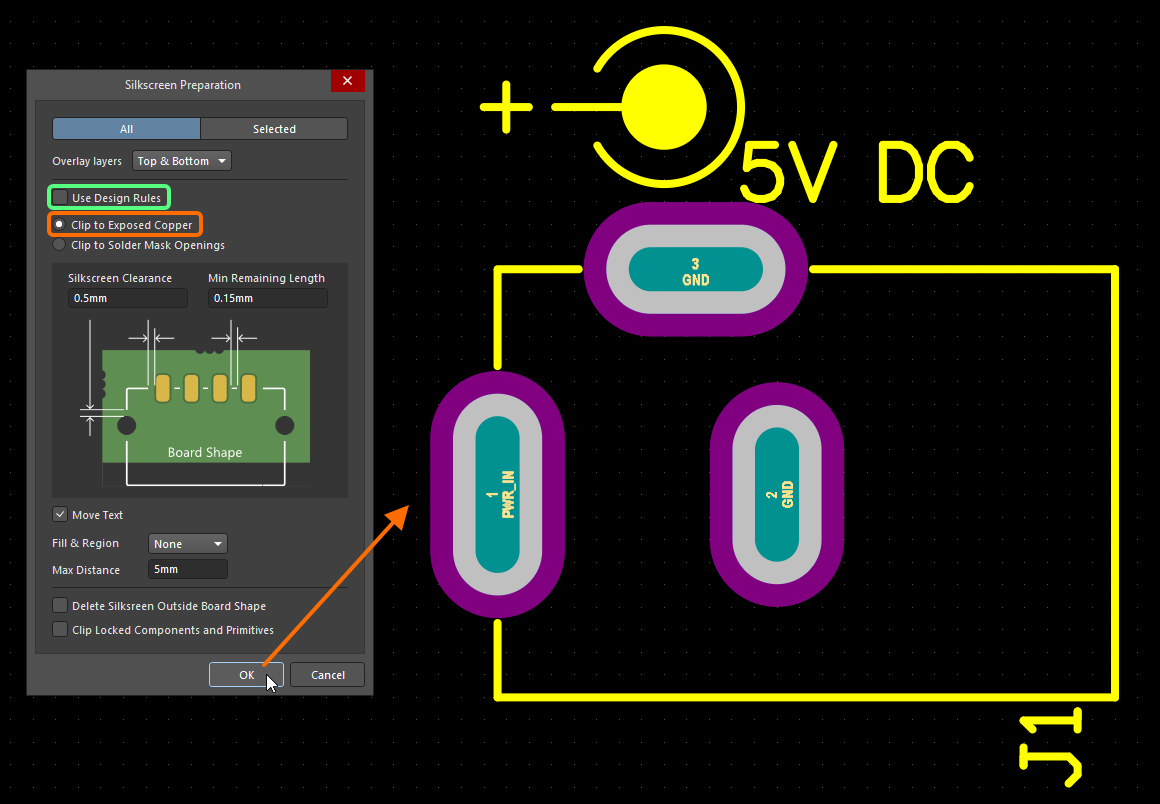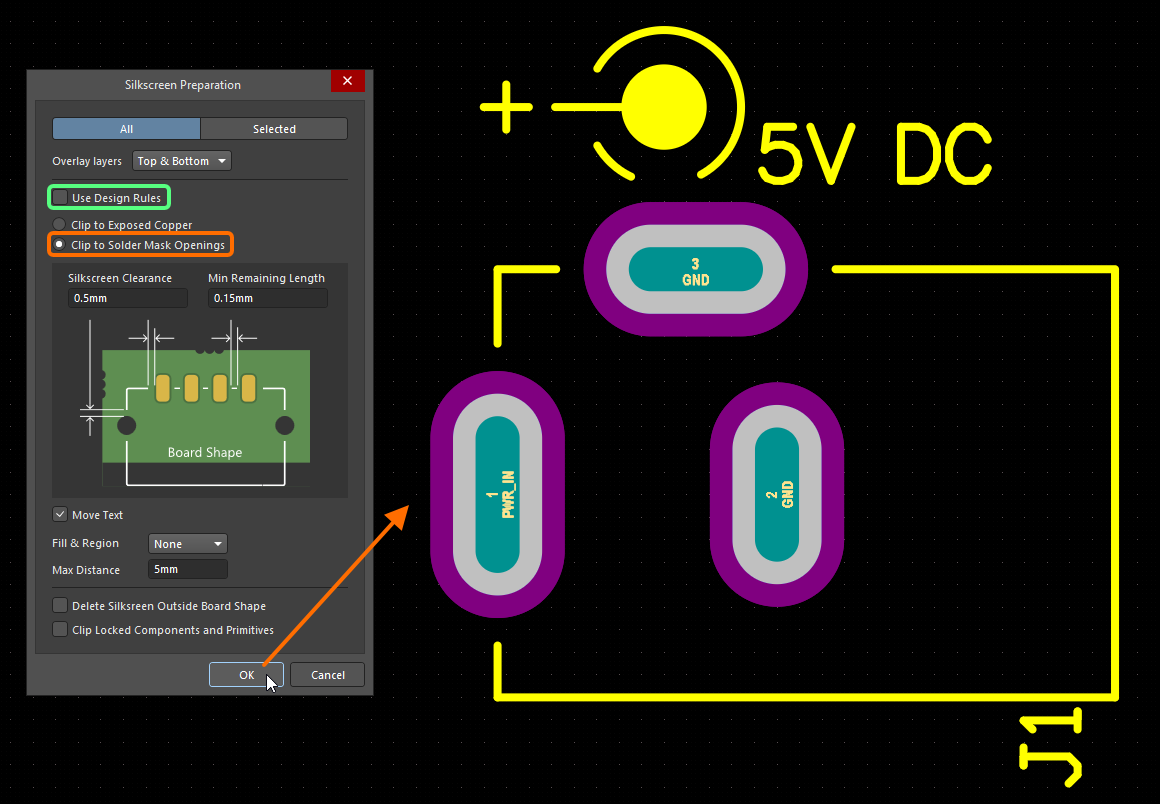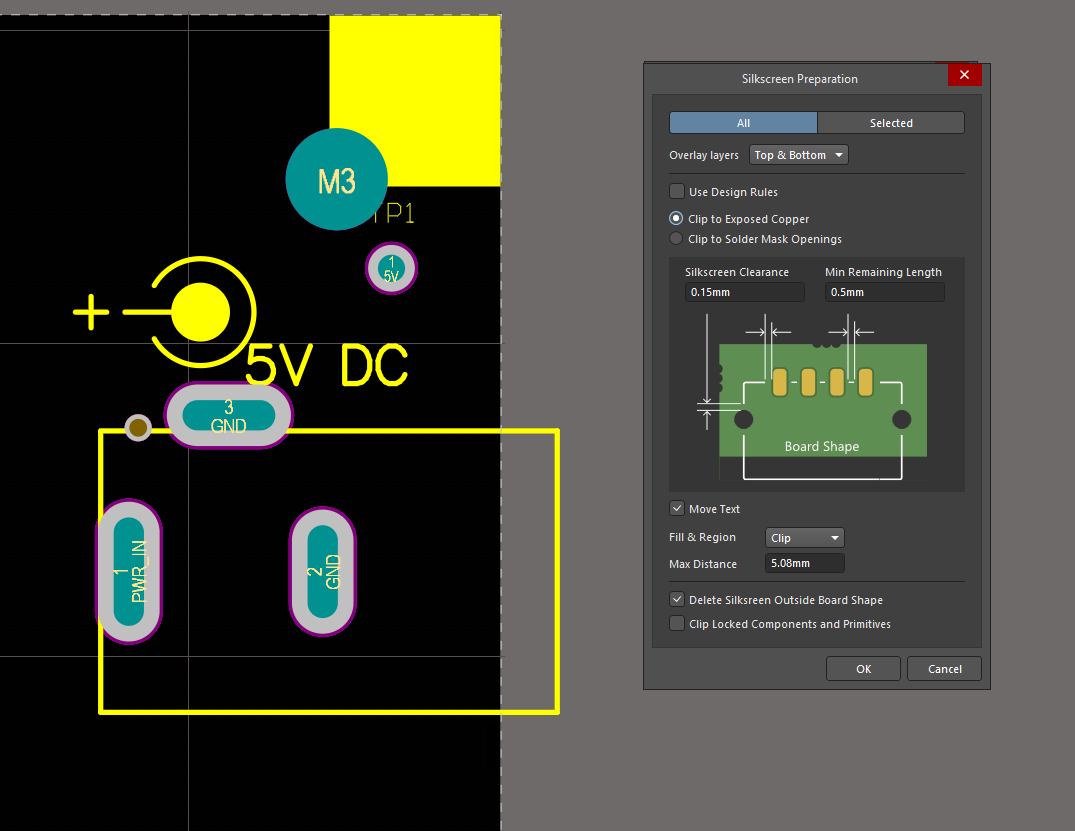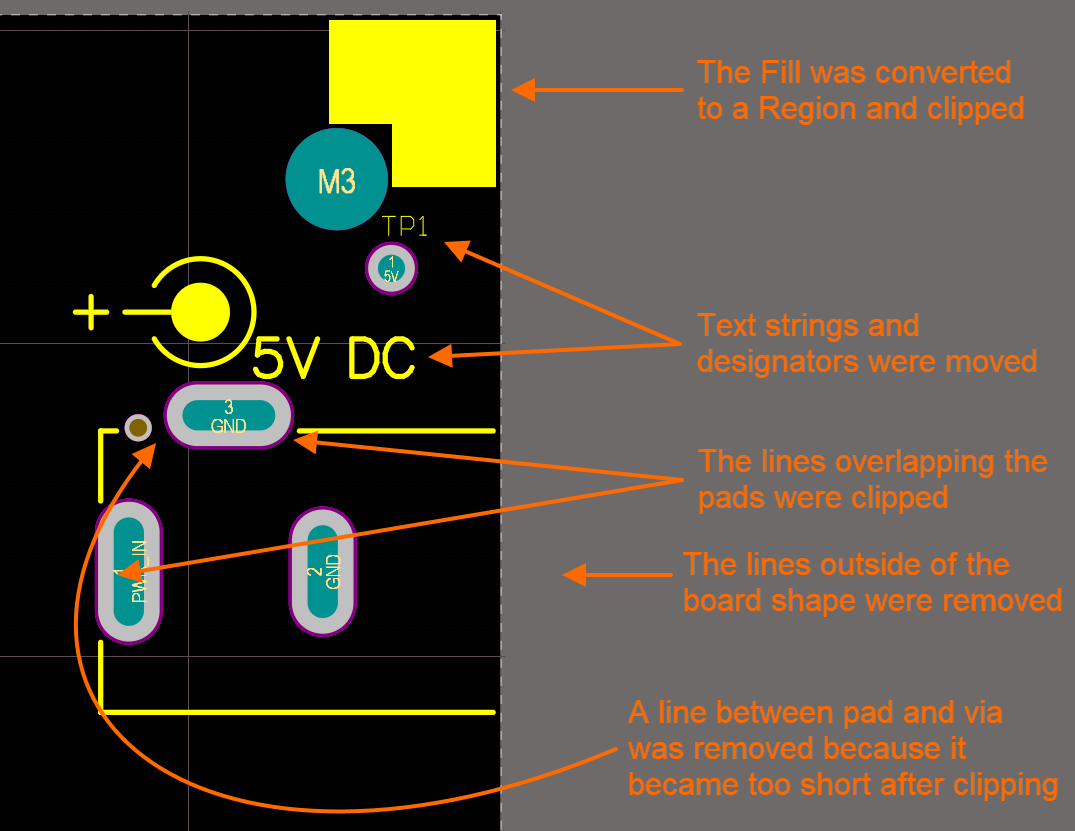丝印制备
To assist in resolving common Design for Manufacture (DFM) issues faced by having silkscreen overlapping exposed copper, holes and board shape, the PCB editor includes a dedicated feature for preparing the silkscreen for your boards. These issues can be effectively addressed by:
- automated clipping of silkscreen lines and arcs;
- automated clipping or movement of fills and regions;
- automated movement of silkscreen text and component designators.
To access the silkscreen preparation tool from the PCB editor, use the Tools » Silkscreen Preparation command from the main menus. After launching the command, the Silkscreen Preparation dialog will open.
Use the dialog to configure the settings of the silkscreen object clipping/movement. The available options are:
- All / Selected – choose to which objects the silkscreen preparation will be applied: all objects or only those selected in the design space.
- Overlay layers – choose to which overlay layers the silkscreen preparation will be applied. This option is only available when All is selected.
- Use Design Rules – enable to use constraint values of the applicable Silk to Solder Mask Clearance and Board Outline Clearance design rules as the Silkscreen Clearance. When the option is disabled, define the value of the Silkscreen Clearance in the field below in the dialog. When the Use Design Rules option is disabled, the following options are available:
- Silkscreen Clearance – define the minimum acceptable value between silkscreen objects and exposed copper, holes and board edge. This field is not available when the Use Design Rules option is enabled; relevant values are taken from the applicable Silk to Solder Mask Clearance and Board Outline Clearance design rules.
- Min Remaining Length – if the line/arc length is less than the defined value after clipping, the objects will be removed from the PCB (including existing objects that were not clipped). Note that this length is the vertex-to-vertex length, not the edge-to-edge length (show image).
- Move Text – enable to move silkscreen text strings and component designators away from exposed copper, holes and board edges if the distance between them is less than the defined Silkscreen Clearance. The movement is limited by the Max Distance value.
- Fill & Region – select an action from the drop-down to be performed for fills and regions when the distance between them and exposed copper, holes and board edges is less than the defined Silkscreen Clearance:
None– fills and regions remain untouched.Clip– fills and regions will be clipped to maintain the defined Silkscreen Clearance. Fills are converted to regions if applicable.Move– fills and regions will be moved away from exposed copper, holes and board edges. The movement is limited by the Max Distance value.
- Max Distance – define a maximum distance to which text strings, component designators, fills, and regions can be moved to maintain the defined Silkscreen Clearance.
- Delete Silkscreen Outside Board Shape – enable to remove silkscreen objects that are outside of the board shape.
- Clip Locked Components and Primitives – enable to clip primitives that are locked or which parent components are locked.
Below is an example of the silkscreen preparation tool.

